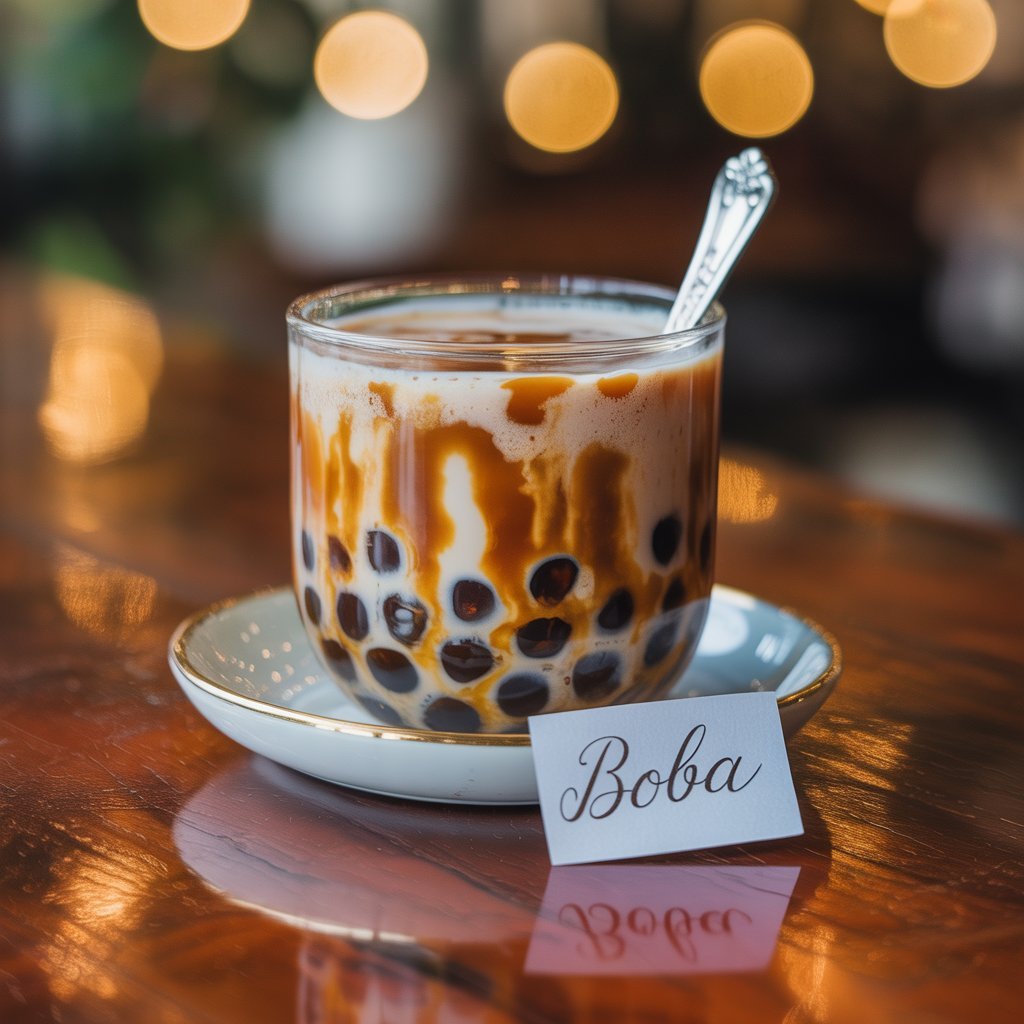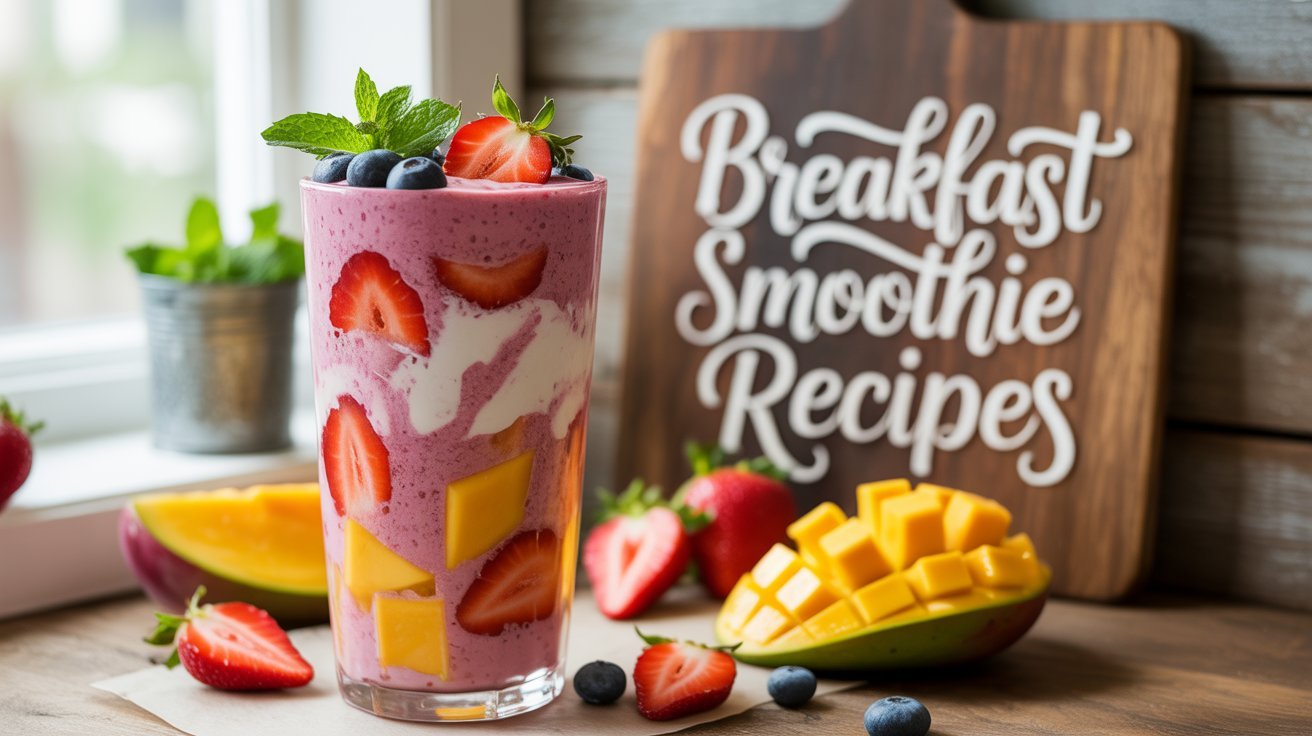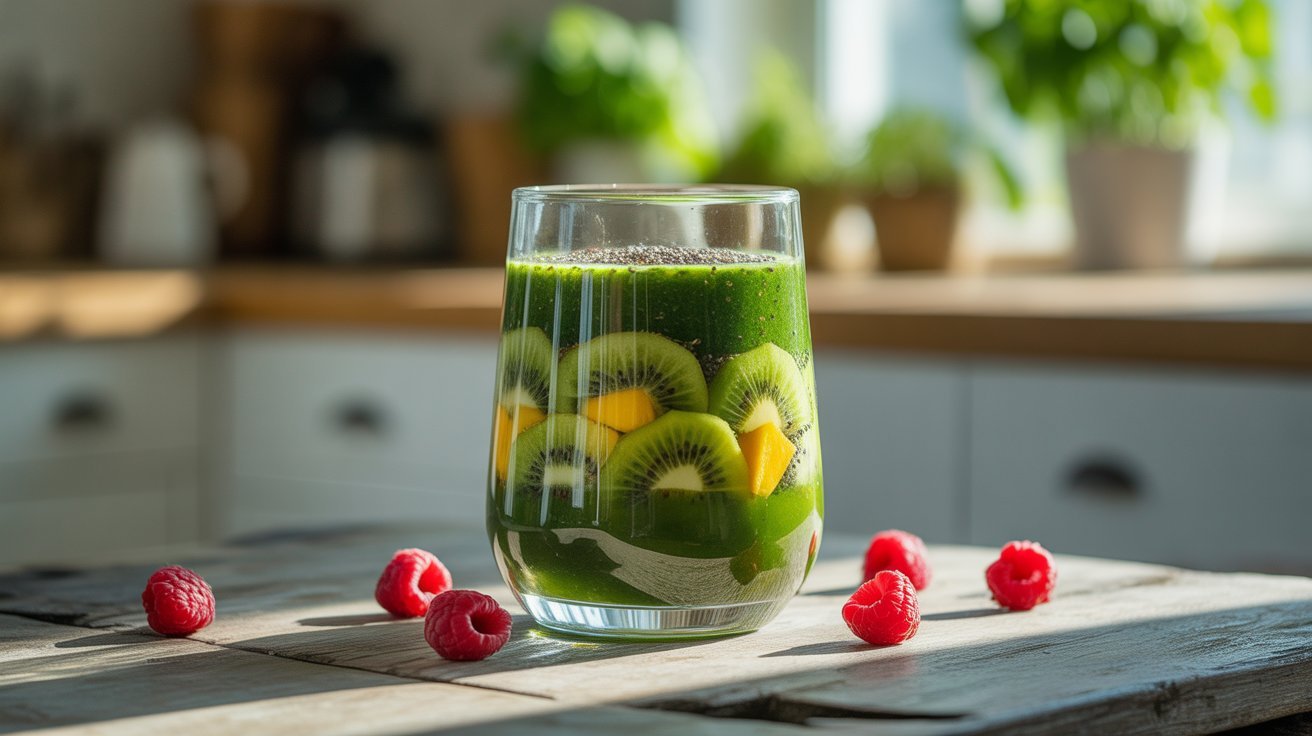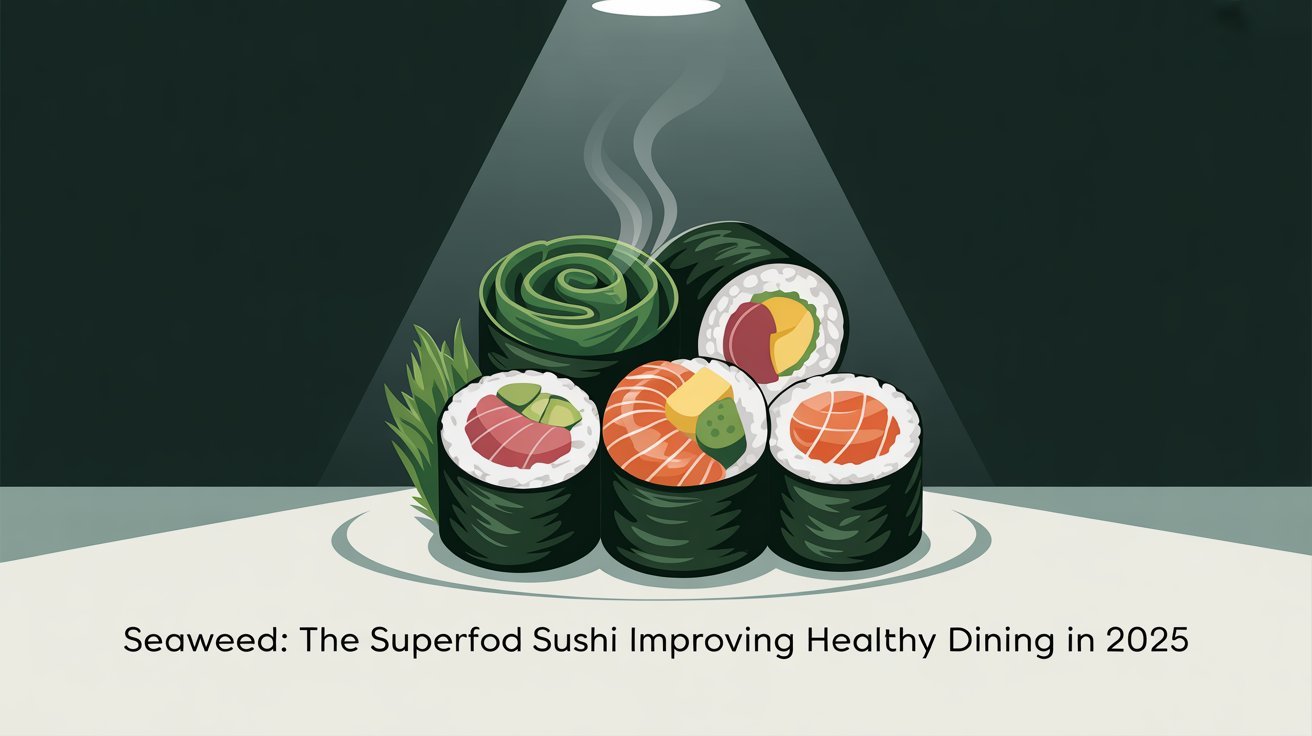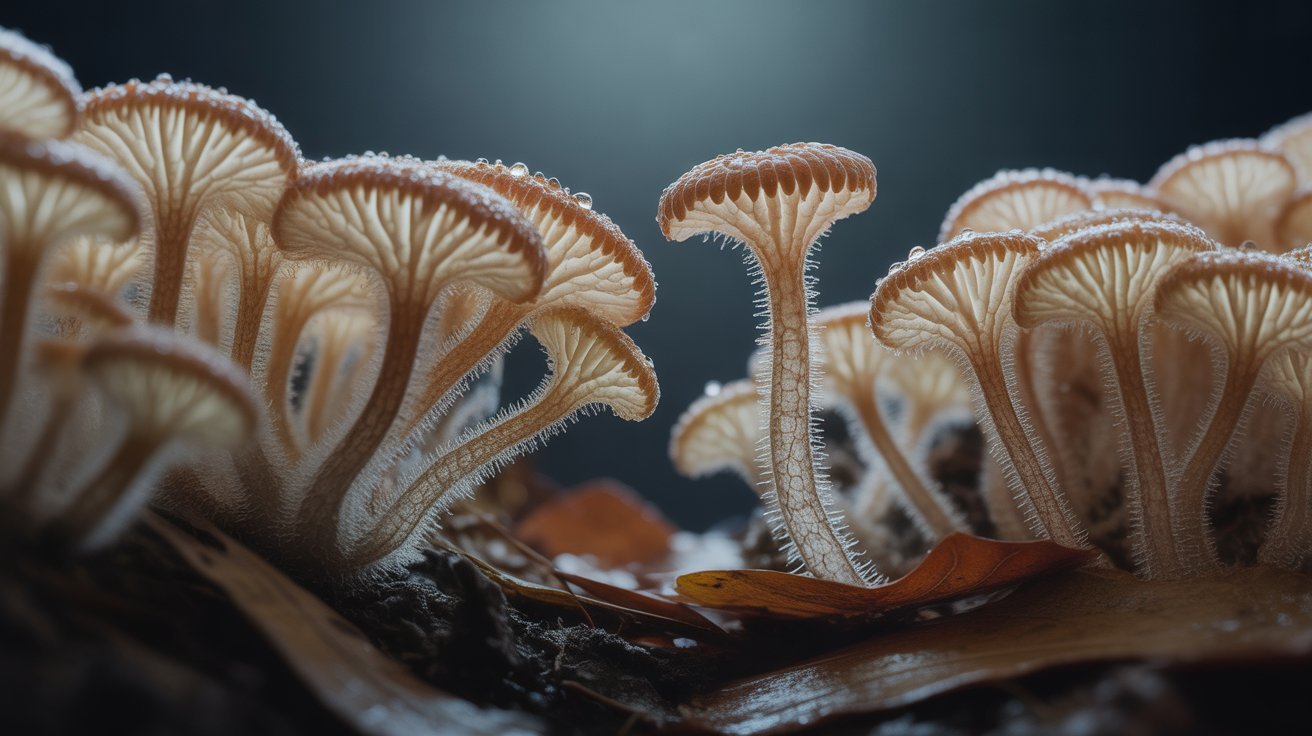Boba tea, also known as bubble tea, has become a global sensation. With its chewy tapioca pearls, sweetened milk tea base, and irresistible flavors, it’s no wonder this colorful drink has gained such massive popularity. But behind its appealing appearance and refreshing taste, boba tea may pose several health risks if consumed regularly. While occasional indulgence is generally safe, many people are unaware of the potential downsides this trendy drink can bring.
we’ll explore 7 hidden disadvantages of boba tea that may negatively affect your health. Whether you’re a daily drinker or simply curious, understanding these drawbacks can help you make more informed choices about your beverage habits.
Disadvantages of Boba Tea
1. Excessive Sugar Content
One of the most alarming disadvantages of boba tea is its high sugar content. A single serving of classic milk tea with tapioca pearls can contain 30 to 60 grams of sugar, far exceeding the daily recommended intake. High sugar consumption is linked to:
- Weight gain
- Type 2 diabetes
- Tooth decay
- Insulin resistance
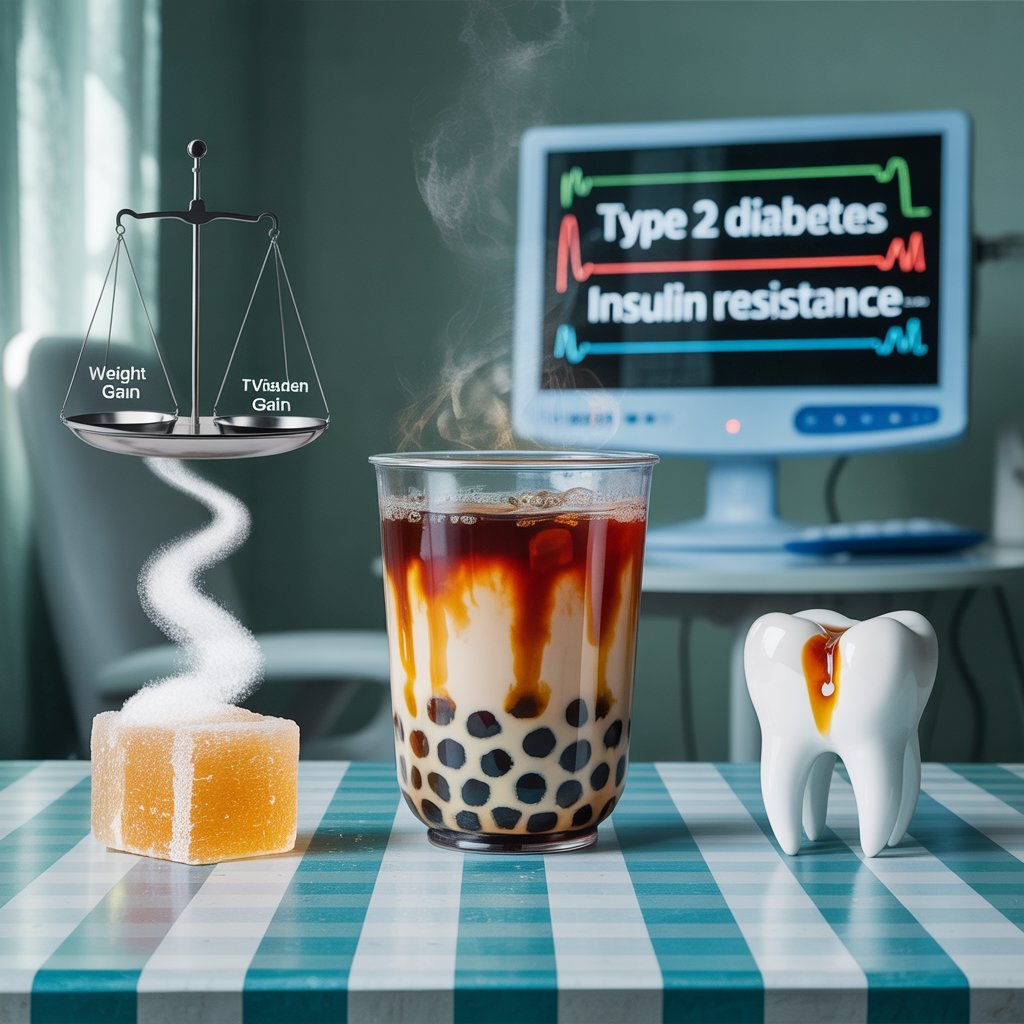
Even “fruit-flavored” versions can be misleading, often made with sugary syrups instead of real fruit. Regular consumption of such sugary drinks can lead to chronic health conditions over time.
2. High Caloric Load
Many consumers are unaware that boba tea is a high-calorie beverage. Depending on its size and ingredients, one cup can range from 300 to 500 calories or more. Tapioca pearls themselves are made from starch, adding calories without offering any significant nutrients.
If you’re trying to manage your weight or calorie intake, this hidden source of empty calories can quickly derail your efforts.
3. Low Nutritional Value
Despite its satisfying taste, boba tea offers very little nutritional benefit. The typical ingredients—tea, milk or creamer, sugar, and tapioca pearls—lack essential vitamins, minerals, fiber, or protein.
The tapioca pearls are pure carbohydrates with no fiber or healthy fats. Most milk teas also use non-dairy creamers that contain trans fats, artificial ingredients, and preservatives, which may be harmful when consumed in excess.
4. Digestive Issues from Tapioca Pearls
Tapioca pearls are chewy and dense, made from cassava root starch. While they’re generally safe in moderate amounts, overconsumption can lead to digestive problems such as:
- Constipation
- Bloating
- Abdominal pain
There have been rare cases where undigested pearls have caused blockages in the digestive tract, especially in children. People with sensitive digestive systems or chronic constipation should limit their intake of boba tea.
5. Artificial Additives and Chemicals
Many boba tea shops use flavored powders, syrups, and artificial colorants to create various drink options. These additives may contain:
- Preservatives
- Artificial sweeteners
- Food dyes
- Emulsifiers
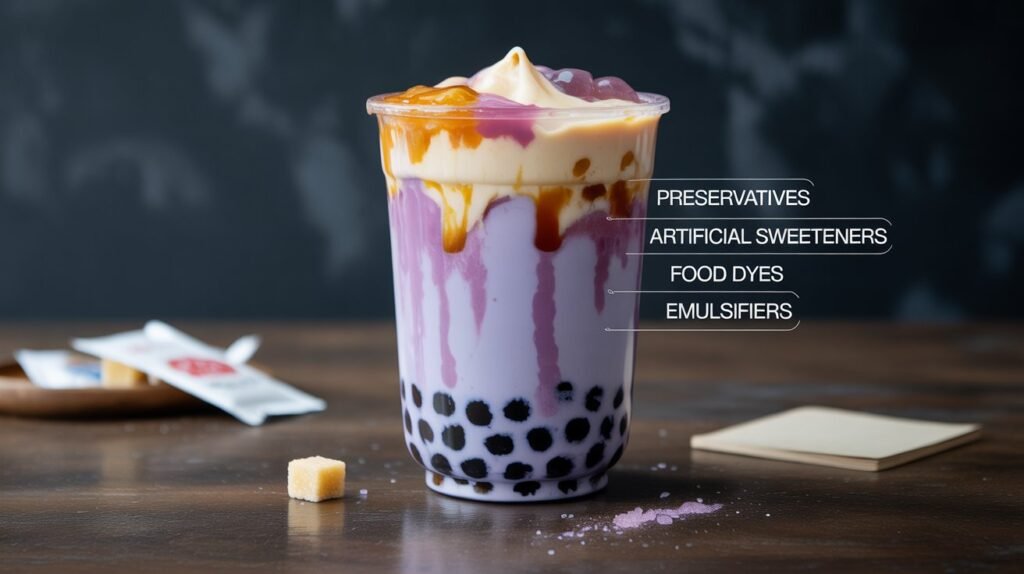
Long-term exposure to these chemicals can have negative health effects, especially when consumed frequently. Additionally, cheaper versions of tapioca pearls may contain chemical residues or low-grade starches.
6. Caffeine Overload
Most varieties of boba tea use a base of black, green, or oolong tea—each of which contains caffeine. While caffeine can boost alertness, excessive consumption may lead to:
- Insomnia
- Increased heart rate
- Anxiety
- Dehydration
When combined with other caffeinated beverages, boba tea can contribute to a daily caffeine intake that exceeds healthy limits, especially for adolescents and individuals sensitive to stimulants.
7. Addictive Consumption Habits
The sugary and chewy nature of boba tea makes it highly enjoyable and potentially addictive. Frequent cravings can lead to a habitual pattern of consumption, which increases exposure to all the disadvantages mentioned above.
This type of habit can also impact your financial well-being, as daily purchases of boba can accumulate quickly. The price of one drink may seem small, but when added up over weeks or months, it can become a significant expense.
How to Make Boba Tea Healthier
If you love boba tea and don’t want to give it up entirely, here are some ways to enjoy it more responsibly:
- Ask for less sugar or choose unsweetened versions
- Choose green tea or herbal tea bases for lower caffeine
- Use plant-based milk or real milk instead of creamers
- Ask for fewer pearls or swap for chia seeds or aloe
- Avoid artificial powders—opt for real fruit blends
- Limit consumption to 1–2 times per week
Conclusion: Is Boba Tea Bad for You?
Boba tea isn’t inherently evil—but its sugary, high-calorie, low-nutrient nature makes it a poor daily drink choice. Like any treat, moderation is key. Understanding these 7 hidden disadvantages helps you make more informed decisions about how often and how much you consume.
If you’re health-conscious or trying to improve your dietary habits, it’s wise to either limit boba tea or modify how you order it. By being mindful of what’s in your cup, you can still enjoy your favorite drink without risking your wellness.

